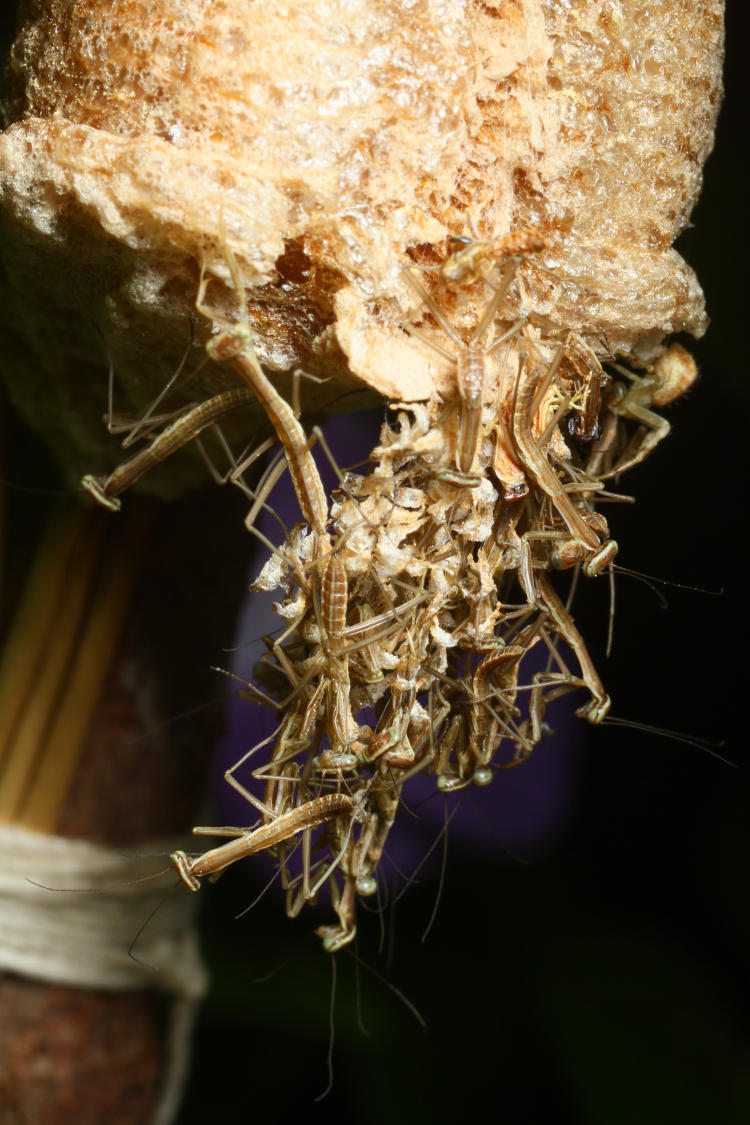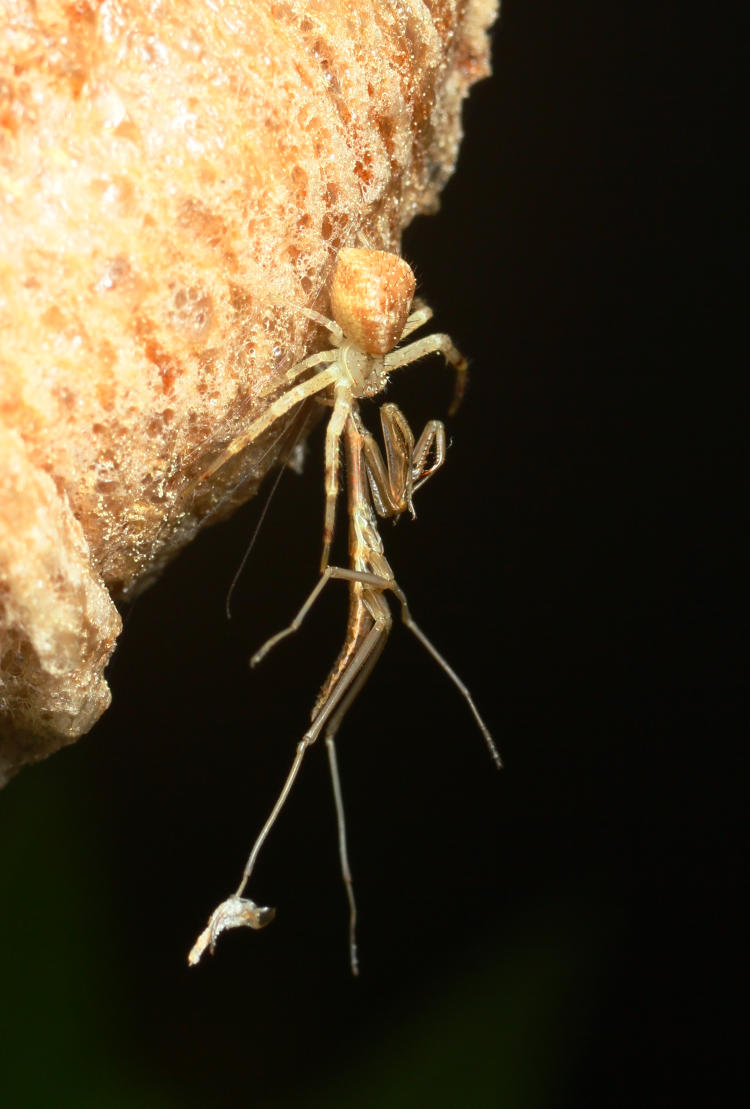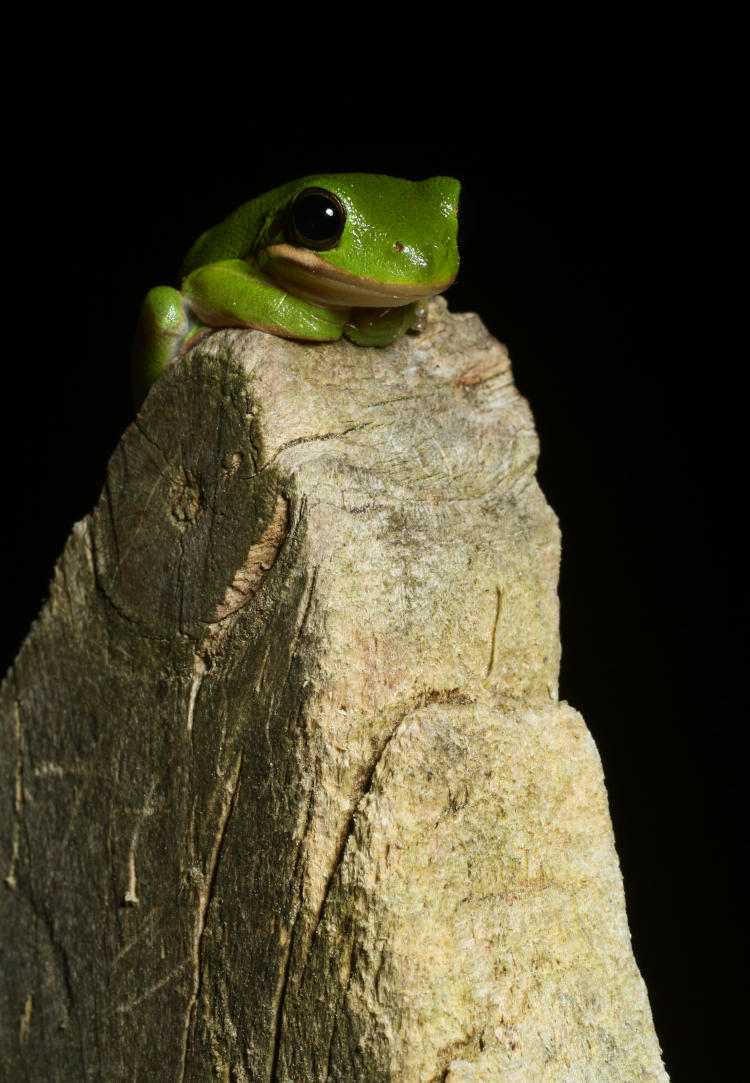I was initially going to say these were from last night, but it’s getting late and some idiot decided the date should change at midnight rather than, say, seven AM. Whatever – they were shot at night, and obviously not right now. Good enough.
While I’m still leery of the temperature dropping to something inexcusable again, it’s been warm even overnight, and so scoping out the sprawling acreage of Walkabout Estates has been showing more than just dead leaves. This next bit, however, was largely like this many hours earlier in the morning, when I noticed that another of the Chinese mantis (Tenodera sinensis) egg cases had hatched. But something was wrong.

Normally, they’d be scattering away to the surrounding branches and plants, but something seemed to have kept far too many of them hanging right beneath the egg case, even when they appear to have separated from their supporting lines properly and show a color change to their chitin. It was very odd. Some were visibly running around, but too many seemed to be stuck or trapped right there. Nothing, so far, has seemed to make sense – I would easily have believed a sudden drop in temperature, but we didn’t come anywhere near a dangerous drop for them, so I’m stymied. Like I said, this was hours after first sighting them, without looking much different.
Someone else noticed this too, and was taking advantage of it, visible above off to the right if you’re looking closely and recognize the anachronistic body shape. In a moment, it revealed itself more distinctly.

This opportunistic but lazy crab spider was helping itself to one of the newborns, which showed no sign of movement itself – this might have indicated that it was already dead, or simply that it had succumbed to the spider’s venom. Regardless, that’s two egg cases down and very little to show for them – here’s hoping at least one of the three others produces an abundance of hardy newborns.
[Technically, there are five others, but two of them don’t look too viable and I suspect they may be from a previous year. The outside ‘foam’ is quite tough and long-lasting, so I can’t say for sure.]
In doing yard work, I moved a bunch of old window panes that we’d replaced last summer and disturbed no less than seven juvenile green treefrogs (Hyla cinerea.) Those that allowed it, I moved to another safe location, but a few found my handling unsavory and made their escape nearby. That evening, within a meter or so of where the windows had been, one perched atop a fencepost and gave me the stinkeye.

I suspect it was simply waiting to see what else I was gonna fuck up, obviously knowing humans enough by now not to expect anything better from them. Or am I reading too much into this?
We’ll make this a shorter one, because there isn’t a lot to say that hasn’t been said before, but I’ll show off another find, quite visible in the headlamp as I toured the yard.

A slightly-portly-looking adult Carolina anole (Anolis carolinensis) was asleep in one of the gardenia bushes, and might have escaped attention (naaahhhh) if it hadn’t been flashing its white belly in my direction. As I maneuvered close, it opened one eye and regarded me dispassionately for a moment before going back to sleep, permitting a nice broadside perspective. This let me keep the entire body in focus, which you’ll see in better detail if you click on that image. Notice the faint color shift right behind the head, which may mean something but I don’t speak Anole.
Hey, look! It’s still Wednesday, so this really was last night. Lost connection twice while typing this, too. Boy, making deadlines like that should be worth something…




















































